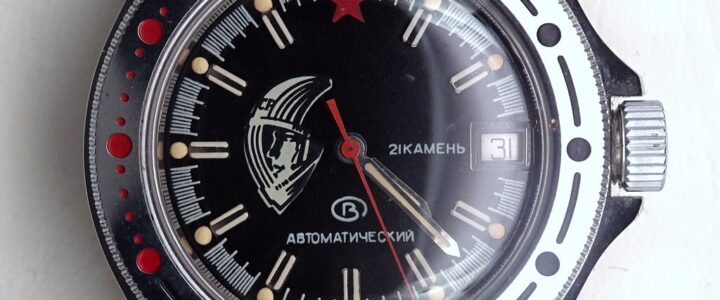The Vostok Cosmonaut, also improperly known as the Vostok Astronaut, is a highly sought-after Soviet watch among collectors worldwide. Its charm lies in the dial that depicts the profile of a cosmonaut inside a space suit helmet. But who is actually depicted? Let’s explore the various theories and the different versions of this iconic watch.
Versions of the Vostok Cosmonaut
There are primarily three variants of the Vostok Cosmonaut watch: two from the Soviet era and one from the post-Soviet transitional period. Additionally, there are different types of cases and bezels that add to the variety of this model.
Soviet Era Versions
- Black Dial The black dial version is usually housed in a chromed Generalskie 091xxx case, with the Vostok automatic caliber 2416b. Produced in the 1980s, it was mainly destined for the Italian and German markets. This model is easily recognizable by its typical unidirectional bezel with small dots.
- Blue Dial The blue dial version, much rarer, is set in a Neptune case and features a Vostok automatic caliber. Despite the color differences, the dial design remains substantially identical to the black version.
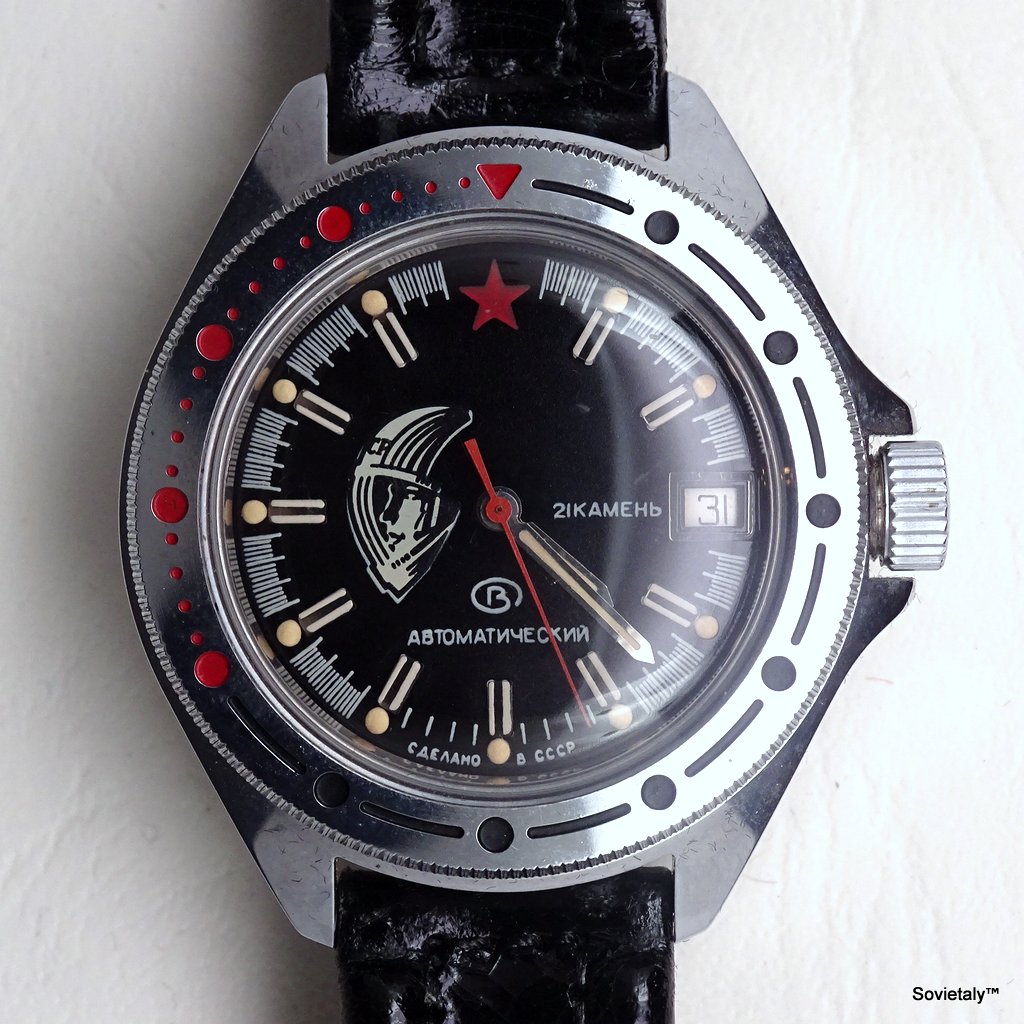
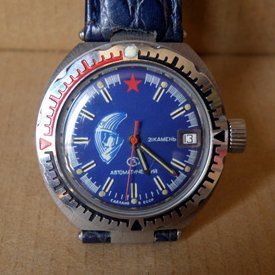
Transitional Period Version
There is also a post-Soviet version of the Vostok Cosmonaut. This variant, often marketed as Amphibia, follows the success of the Soviet versions with a very similar dial. The main differences lie in the case and bezel, as seen in the following images.
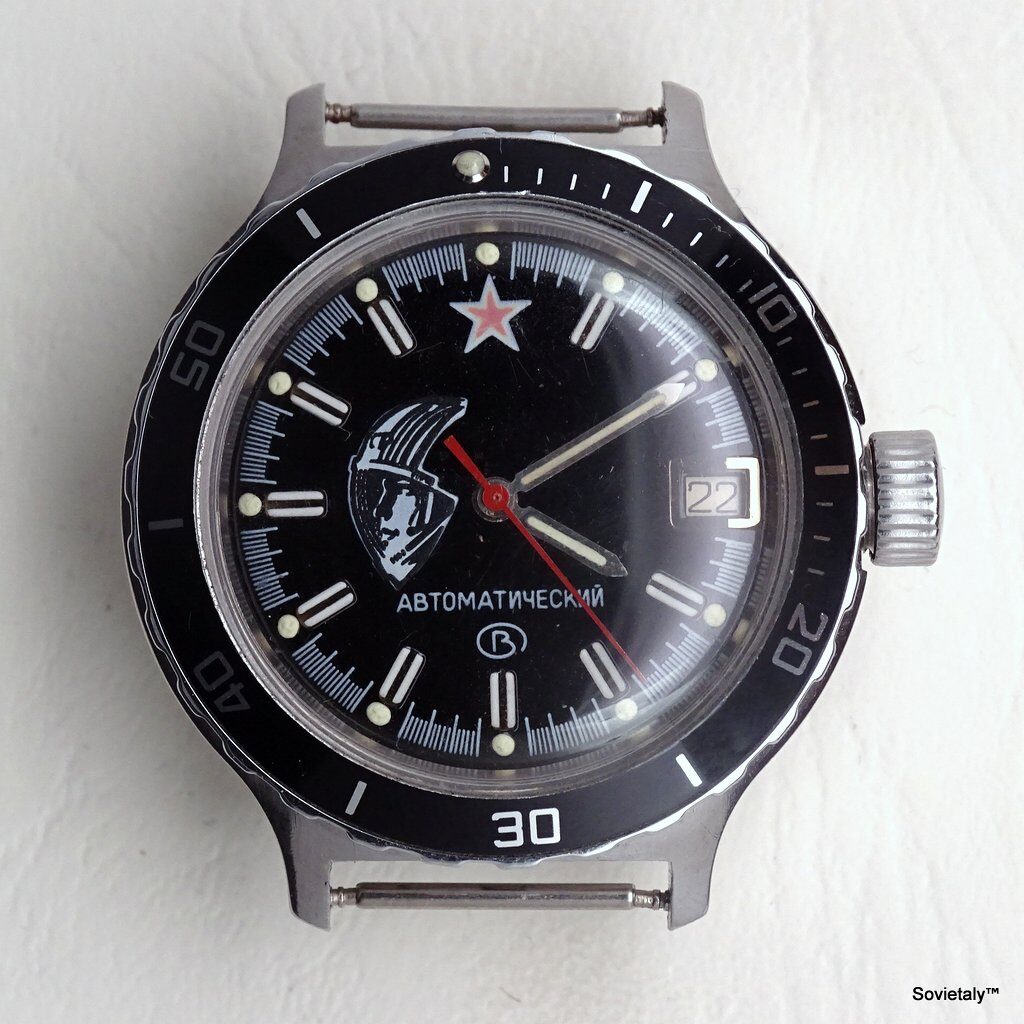
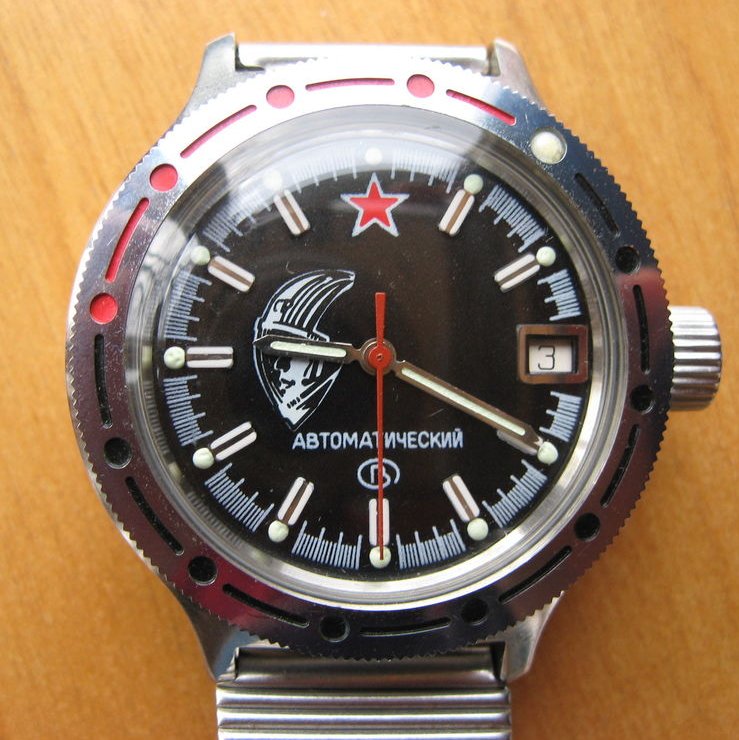
The Dial of the Vostok Cosmonaut
The most distinctive part of the watch is undoubtedly the dial, which depicts the profile of a cosmonaut with a helmet against a backdrop evoking deep space. The Soviet and transitional versions are very similar but present some differences in graphic details.
At first glance, it’s not easy to notice the differences between the two versions. However, by carefully comparing the reflections on the helmet and visor, distinctive details can be identified. Just take the position of the “P” on the helmet as a reference.
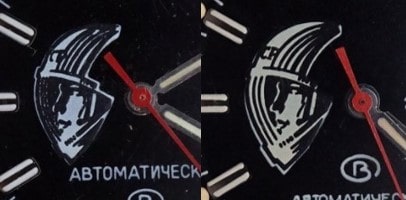
Who is Depicted?
There are three main theories regarding the identity of the cosmonaut depicted:
- Yuri Gagarin The most common theory is that the cosmonaut is Yuri Gagarin, the first man to travel into space. The delicate features of the depicted face resemble those of Gagarin, as seen in historical photos (Astronomy Scope) (Night Sky Pix).
- Anna Lee Fisher Some suggest that the image might be inspired by American astronaut Anna Lee Fisher. Although it’s unlikely for an American astronaut to be depicted on a Soviet watch, the resemblance to some photographs of Fisher is striking (Difference Wiki).
- Valentina Tereshkova The most fascinating and perhaps most probable theory is that the face depicted is that of Valentina Tereshkova, the first woman to travel into space. Her historic mission aboard Vostok 6 in 1963 makes her an icon of the Soviet space era (Astronomy Scope) (WorldAtlas).
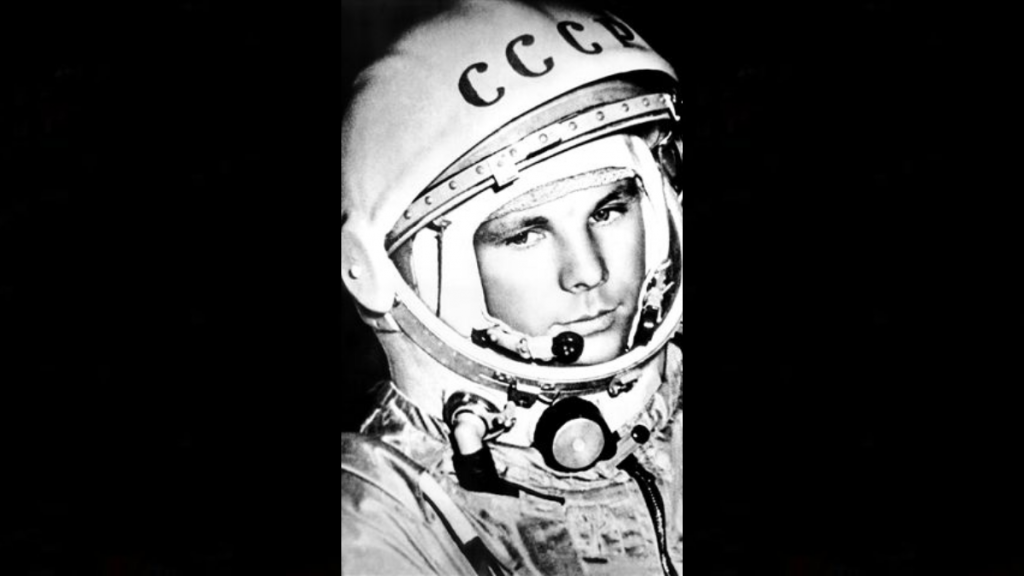


Does the Vostok Cosmonaut Have Clones?
There is a similar, though less prestigious, version of the Vostok watch. It is a Slava model with manual winding and caliber 2428. The light gray/white dial features the profile drawing of the cosmonaut but with less definition compared to the original Vostok. Curiously, the bottom of the dial bears the name Yuri Gagarin in Cyrillic (Ю. А. ГАГАРИН), which might support the theory that the cosmonaut depicted is Gagarin.
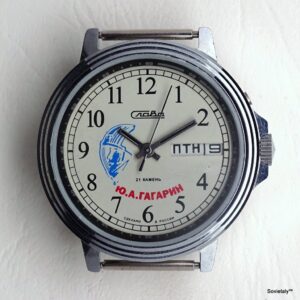
Conclusions
The Vostok Cosmonaut, with its various versions, is a milestone in any collection dedicated to the space era and Soviet watches. The simplicity of the design and the cleanliness of the dial make it one of the best Soviet watches of the 1980s. Regarding who is depicted on the dial, the mystery adds an additional layer of charm. Whether it is Gagarin, Tereshkova, or a generic cosmonaut, the Vostok Cosmonaut continues to celebrate those brave men and women who paved the way for space exploration.
Difference Between Cosmonaut and Astronaut
The term “cosmonaut” is used to refer to space travelers trained by the Russian or Soviet space agency, while “astronaut” is used for those trained by U.S., European, Canadian, or Japanese space agencies (StarLust) (Astronomy Scope) (Night Sky Pix). The distinction originated during the Cold War and reflects the independence and competition between the U.S. and Soviet space programs.
- Cosmonaut: Derived from the Greek words “kosmos” (universe) and “nautes” (sailor), meaning “sailor of the universe.”
- Astronaut: Derived from the Greek words “astron” (star) and “nautes” (sailor), meaning “sailor of the stars.”
Fun Facts About Anna Lee Fisher
Anna Lee Fisher was the first mother to fly into space and worked as a chemist and astronaut for NASA. She was married to William Frederick Fisher, also an astronaut, and together they represented one of the few married couples to have both flown into space (Difference Wiki).
Insights on Yuri Gagarin and Valentina Tereshkova
- Yuri Gagarin: The first man in space, on April 12, 1961, completing an orbit of the Earth with the Vostok 1 mission. His achievement represents a milestone in the history of space exploration (WorldAtlas) (Night Sky Pix).
- Valentina Tereshkova: The first woman in space, flew on June 16, 1963, aboard Vostok 6. Her mission lasted almost three days and marked a significant advancement in the inclusion of women in the space program (WorldAtlas) (Night Sky Pix).
For further insights, here are some useful links:

